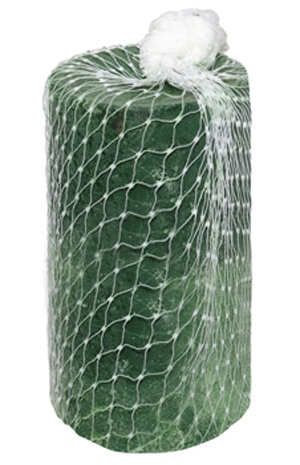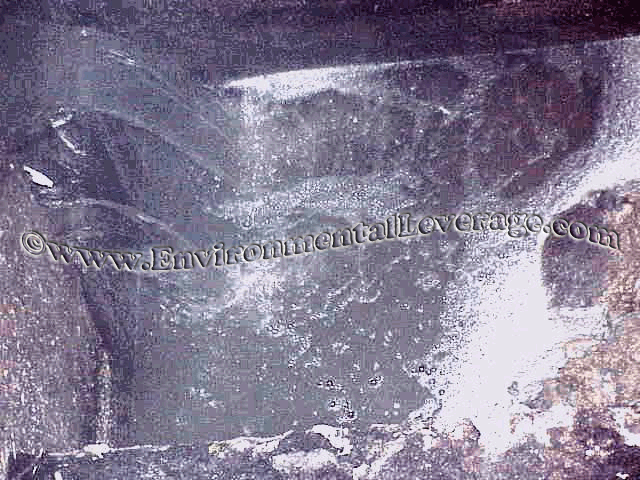Biological Products:
Bioaugmentation products for Wastewater applications in Papermills, Refineries, Chemical, Tanneries, Municipalities, Textiles, Steel, Agriculture, Animal feedlot, Gun Powder plant, Food and Beverage- Dairy Products, Orange Juice factory, Wineries, Cookie factory, Vegetable processing plant, Meat packing, Barbecue Restaurant, Aquaculture, Ornamental Ponds with algae , CAFO, Nursing homes, Military, Campgrounds, Universities, Regulatory agencies, River and Lake remediation
Lab Services:
Filamentous Identification Lab Service. One reason to identify filaments is to determine the filaments characteristics and then determine the type present. If the type is found out, a root cause can usually be associated with a particular filament. If the cause is known, then a correction can be made to alleviate problems. Chlorination is only a quick fix. Without process changes, filaments will grow back after chlorination. Wastewater Biomass Analyses and Cooling Tower Analyses also available
Training Materials:
Training is an integral part of any job. Not everyone is at the same level of training. Many people want beginning concepts and basics. Some need technical information or troubleshooting. Some want equipment, technology or process information. We have developed a full set of Basic training, Advanced training, Filamentous Identification the Easy Way as well as custom training CD's Manuals. We also provide hands-on training classes and soon will have an Online "E-University".
Audits and Consulting:
At Environmental Leverage® Inc., we have a team of experienced individuals who come into your plant with a fresh pair of eyes. The system is checked from influent to effluent. System optimization, equipment efficiency and operational excellence are key components explored. Key Benefits Equipment efficiency Total Cost of Operation reductions Reliability and safety An onsite audit is conducted to examine system parameters, process controls, and current monitor and control procedures. A physical walk-through is conducted, process flow diagrams are examined, previous design criteria are examined and current standard operating procedures are evaluated along with data logs.
|
Collection SystemsLatest News!
What's New!
We have just added "Virtual Audits" to our capabilities. Check out our new Services. We are in the process of developing new courses for our ""Online E-University" in order to meet the needs of our global customers that cannot travel to our public classes.Visit our new website www.WastewaterElearning.com/Elearning
Anything and everything that is dumped down the drain winds up in the sewers and lift stations, from grease, garbage, toilet paper, human waste and food to industrial waste. Fast Food restaurants creating FOG are adding significant loading to a collection system.
A collection system is not a sterile environment. As long as there is food for the bacteria to grow, they will grow in the collection systems. The real control is in making sure the right types of bacteria grow in the collection system.
Basically, the collection systems can be thought of as one large holding tank or Equalization tank prior to the Wastewater Treatment Plant. Many municipalities have miles and miles of pipes, and numerous lift stations prior to a wet well, and then the actual wastewater treatment plant. Maintenance on these pipes can be costly and time consuming, as well as incur some safety concerns.
Bacteria, if given even the slightest chance, will grow anywhere there is sufficient food. Typically, there always is some type of small biofilm in all sewer collection pipes. Usually the growth is slow, due to low BOD loading and high flow of water causing enough movement or even pressure from the lift stations. The biofilm is relatively small, and sloughs off quickly with rain and normal flow. In effect, a miniature RBC unit can be created in the collections systems with the right conditions. Typically, the flow is enough to cause the biofilm to slough off without causing problems.
In cases where easily degradable organic compounds are discharged to a system, a very rapid biomass growth can occur. If the industrial or institutional discharger uses large amounts of rolling or cutting oils, Grease or sugars in the processes, has dipping baths where biofilms are allowed to grow, or septic water is allowed to collected in tanks onsite, and then this is discharged into the sewers, the bacteria in the system will quickly grow on these types of substrates. If the optimum environment is not present, such as sufficient N, P or lower pH, or sufficient mixing and Dissolved air, then a slimy biofilm will develop instead of floc. Remember, bacteria need what we call the Critical 5 regardless of whether they are in the pipes, in a holding tank, the sewers at the plant or the final wastewater treatment plant.
Ok, so what exactly are the "Critical 5 plus one"? I have never heard of that. There are 5 critical measurements that should be monitored and controlled to effectively run a biological treatment plant efficiently; Temperature, DO, Ammonia, Ortho-phosphate and pH.
Acceptable environmental parameters for biological activity
including:
Typically most sewers have a pH of around 7-7.5, mixing and flow through the pipes generally give enough DO to the system. Temperature is not usually able to be changed, but is not too bad. Since most pipes are well below the freezing level underground, activity will slow in the winter, but never freeze up. N and P are high in normal household waste due to human biosolids, but when high industry or institutional, such as hotels, restaurants or strip malls with fast food restaurants are around, then these variables can get out of line and cause problems.
What are you growing in your pipes? Let's take a look at some pipes, wet
wells, collections systems and lift stations and see just what can happen. Here you can see not only grease and FOG in the water, but also growing on the walls of the pipe and up into the collection system.
In these three lift stations you can see a grease ledge on the side of the lift station and also growing around the pipes, chains and floats.
In some lift stations, hard grease balls or "floating turtles" will form. These can block up pipes and cause problems with pumps if allowed to grow too large and cause obstructions. Some lift stations can get significantly crusted with thick grease, FOG and solids.
Lift stations can be extremely small or up to 5 million gallons a day! Obviously, the larger the lift station or wet well, and the longer the holding time in the vessel, the more solids and grease and biofilm that can build up. Some lift stations even have multiple chambers.
This is a manhole 20 feet from a small restaurant. Look at how much grease, FOG and solids are built up in this small area. This restricts the flow and eventually may cause problems in the restaurant with back-ups. The solution- a small amount of bacteria were mixed in a bucket of water and poured directly on the surface of the grease to clean out this manhole. It worked! Continual dosage will be required weekly, though since there is no source for recirculation an it gets washed out periodically. Ongoing maintenance kept the manhole from ever building up so many solids again though!
Here is a case of a stretch of over 1-2 miles that a city had where the pipes were growing a large biofilm directly in the pipes and had to jet out the lines weekly. Significant levels of slime were visible, and sometimes long "ropes" of slime and biomass could be seen snaking through the pipes.
The biofilm, if not jetted out weekly, would build up enough to block
off the mains and the laterals.
If any industrial plant has a very high BOD loading, or even one with simple sugars that are easily degradable, and ample time in the pipes to grow, you will get significant growth in your pipes and lift stations. In this case, the flow was low, but the loading was high, so ample time was allowed in the pipes for the bacteria to grow. The problem in this case was there was not enough N and P since it was mostly industrial waste instead of human waste, so a nutrient deficient condition arose, along with septicity, causing the growth of filaments and high polysaccharide slime, which developed into a thick, slimy biomass film.
Slime and long filaments formed a majority of the growth along the bottom
and sides of the pipe, similar to growth on a RBC unit. Sooner or later it
would slough off, and travel a bit down the pipes, until it eventually ran
into the part of the sewers where household waste joined the stream. Now
large chunks of tissue paper and waste mixed in with the stream, causing
larger buildups of biomass, until eventually there were 6-7 ft long solid
masses of debris, slime and biofilm.
How do you get around these types of situations instead of jetting a line out manually weekly which is not only time consuming, but costly? Pretreatment is possible- chemical, biological and mechanical methods are ways to address these scenarios. Obviously each plant and problem must be looked at and the correct response for each situation evaluated. Numerous options are available.
1. A DAF unit can be installed onsite at the plant to not only float out any oils, but add aeration to the stream, so no septicity would occur in the lines, addition of Nutrients can then be added to the stream as it leaves the plant if necessary.
2. Pretreatment onsite. A small tank can be placed onsite to pretreat the organics prior to addition to the collection system. The typical flows from this plant appeared to be only 45-65,000 gallons per month. This is extremely small. The cost to install a small holding tank, with a mixer for aeration, add some nutrients, a small dosage of bioaugmentation and knock out some of the oils or organics would be extremely cheap and time saving compared to jetting out a line. Since the flow is so low, a small tank would work easily. The life span of normal floc forming bacteria is 20 minutes to 2 hours. It does not take long to quickly degrade organics if in the proper environment. The TSS from the floc formation should have no problem traveling through the pipes, and there would be no blockages in the future. Nutrients must be added though, or slime will form in the tanks, and then again in the pipes!
3. Numerous options are available for mixing and aeration of pre treatment tanks, holding tanks or lines. A walk through the plant is recommended to look at the process, see where water is being held, what types of chemicals are used onsite, and how beneficial reuse may be used onsite.
Mixing and aeration of tanks can cause less septicity, growth of fungi and slime forming bacteria. One cheap, method that does not require maintenance is the installation of Venturi-type injectors in the incoming pipes to make sure that adequate aeration is in the tanks. No moving parts are involved, so very little maintenance is ever required. We have used these at many pretreatment tanks to supplement oxygen to a system.
Works great at depths less than 5' Utilize standard water pumps for
quiet, high-efficiency aeration , Models for 0.125 cfm through 358 cfm
4. Add nutrients to the drains onsite and hope there is sufficient air and mixing in the pipes, at least this would cause less slime growth, and hopefully more floc formation. I would not add bioaugmentation products to the drains, unless you add sufficient nutrients. You already have easily degradable compounds in this sewer, more bacteria without sufficient nutrients would only make it grow faster and develop more slime. A dual program must be implemented if you decided to add bacteria and nutrients. Nutrients alone can be added, but not bugs alone.
5. Add bleach to the drains at the industrial plant, to kill off any slime that has formed in holding tanks, and make sure that very little biological growth can occur in the sewer pipes, and that all treatment takes place only onsite at the Wastewater treatment plant.- not the best option, but at least a option
6. Grit removal with mechanical equipment, either screening, a small cone settling tank or even a plate and frame clarifier. This could include Recovery of metals and coatings, or even just removal from the sewer system would be an improvement.
7. Automatic Pit Evacuator(APE). "A stationary inductor, the Automatic
Pit Evacuator (APE) recirculates 5-12% of the flow and derives its
The stainless steel device is installed in a stationary position suspended in the water column from piping. The APE is passive with no moving parts. Classified as a preventative maintenance device, the APE produces 5.7-6.2 mg/l dissolved oxygen (DO) entrainment through 80% of each pump cycle. Atmospheric DO is entrained during the venturi effect through a sleeve attached to the piping. Oxygen transfer rates (lb O2/hp-hr) for Jet Aeration are valued at 2.0-3.0. Typical Alpha values (varying with atmospheric conditions) are rated at 0.75. DO entrainment produced by the device offers on site H2S abatement, preventing damage to capitol facilities and equipment.
8. Some collection systems just need a little help with Mother Nature.
The
9. The Best option would be some type of beneficial reuse program or recapture and reuse onsite of side streams. Without auditing their plant, and knowing exactly their process, or the chemicals involved, this would be hard to speculate at. We work with many outside companies that do this. One man's garbage is another mans treasure.
Odor Control issues in lift stations and wet wells
We have had some cases where the flow is so low, that the water in the
lift stations or wet wells becomes septic and causes odor control issues for
the municipality.
1. Peroxide addition- almost always very expensive and destroys some of the biomass cells when added, but kills some of the non desirable bacteria, destroys COD and adds O2 to the water. High BOD Demand can make this a very expensive option.
2. Sodium nitrate addition- Sometimes, when mechanical means are not available due to location and electricity, air volatilization issues, chemical means can supplement oxygen to a biological system. Typical rule of thumb is 1.4 lbs of oxygen per lb of BOD. When oxygen is not available, Sodium nitrate can be supplemented, ( or any form of nitrate- we have just found the dry sodium nitrate is the cheapest, and safest for handling purposes). Typical dosing rule of thumb 2 lbs of sodium nitrate required per lb of supplemental oxygen needed.
3. Praxair- injection of pure oxygen to supplement current system-
additional information at Environmental Leverage Inc.
4. Pine Blocks or mist systems- Some plants hang pine blocks in the lift stations to overcome any minor odors that are emitted, and some plants set up elaborate mist systems with essential oils to mix with the air, and destroy any airborne odors.
Obviously, there are tons of issues with Collection Systems, lift
stations, wet wells and wastewater treatment plants.
Call us if you have any questions or have problems with your lift stations and wet wells! We have application options that can help. Products such as MicroBlock solid bio block. Really fights FOG. We are more than happy to help come out or troubleshoot with you over the phone. Phone 630-906-9791 or email us at admin@EnvironmentalLeverage.com
For additional information on Biological products that can be used to help overcome upset conditions or other problem issues or even just to help the plant recover faster. Feel free to contact us. This is the same lift station as above after a biological program with our products! The majority of the grease is gone, there is clear, free running water! More information on grease in Collection systems and Sewers Wastewater Lift stations
What is growing in your Collection System?
Bioaugmentation Solutions for Lift stations, Wet Wells and Collection Systems
MicroBlock-Solid
bio block biological products
that are specifically formulated and packaged for use in lift stations and
large restaurant grease traps to remove grease and FOG build-up and help increase
degradation capabilities.
Wastewater Training CD's or on Flash Drive
|

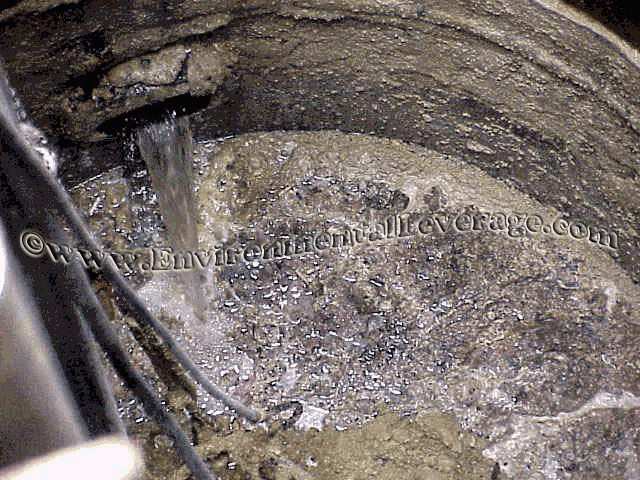
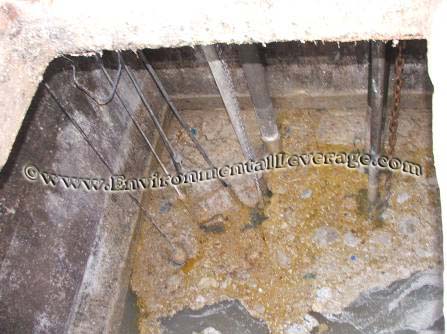
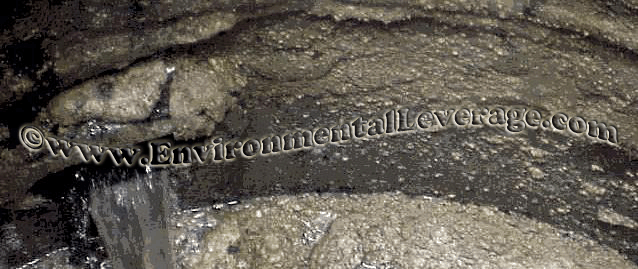
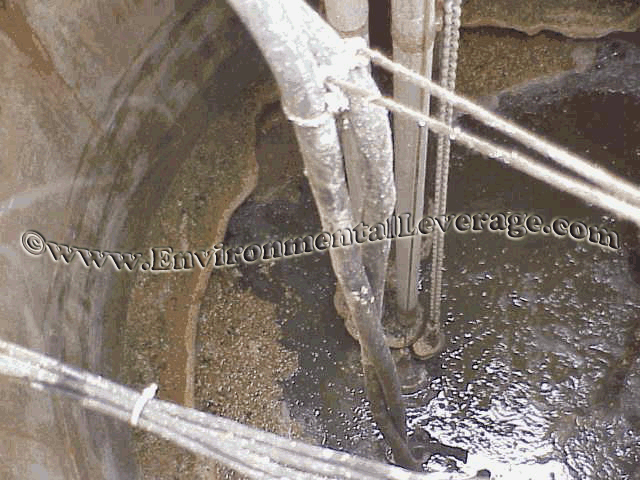

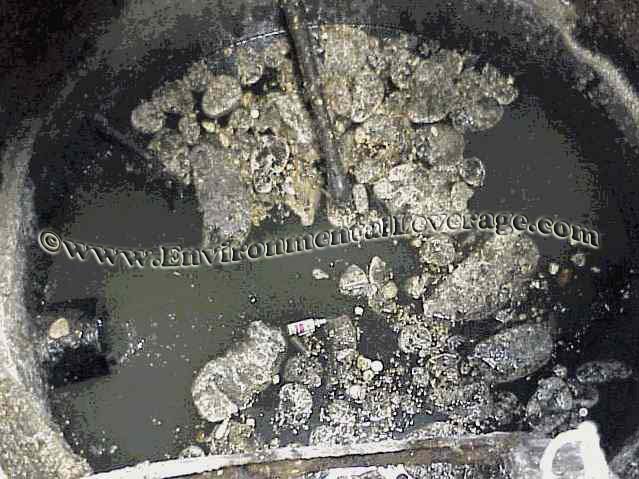
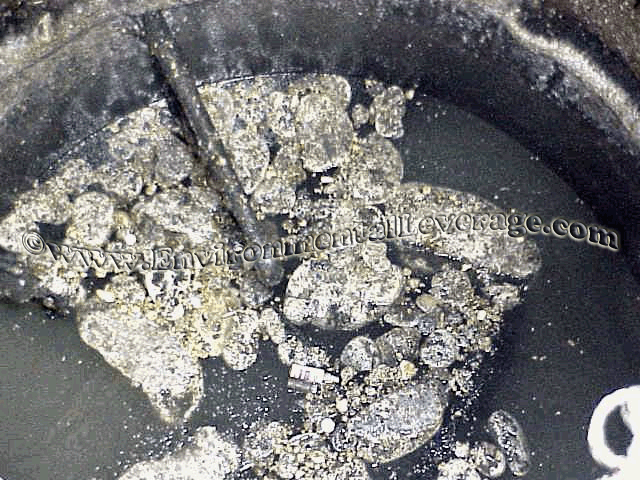
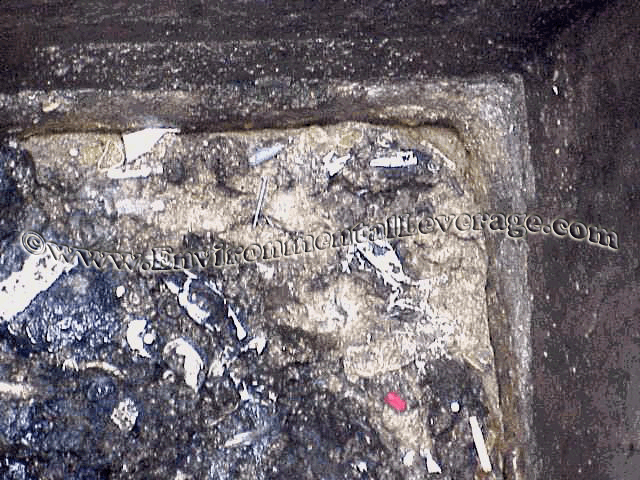
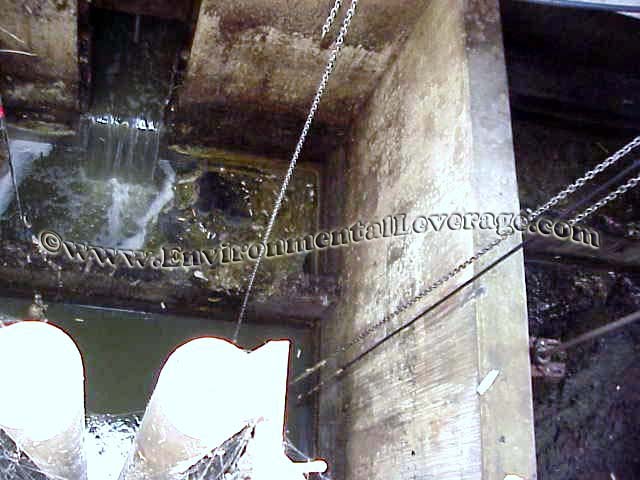
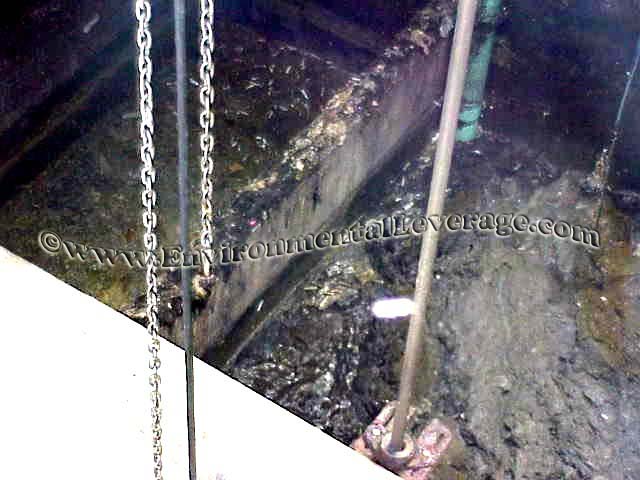
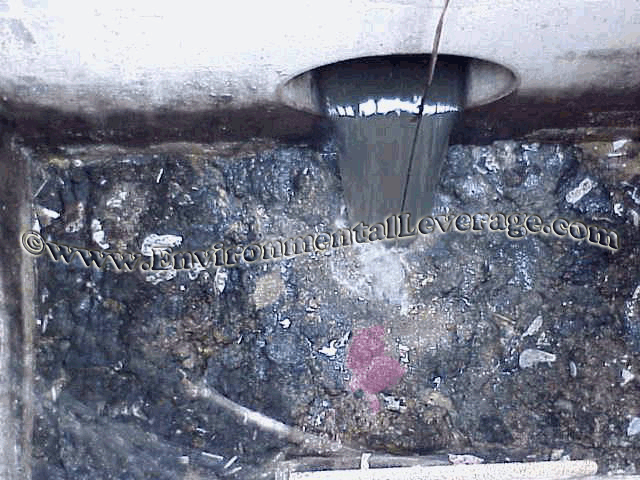
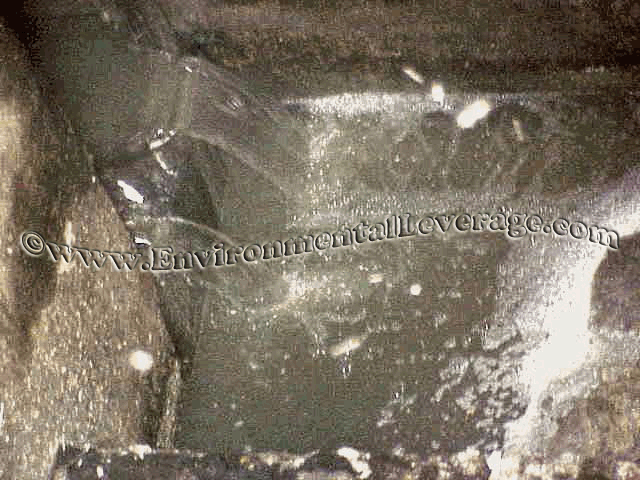
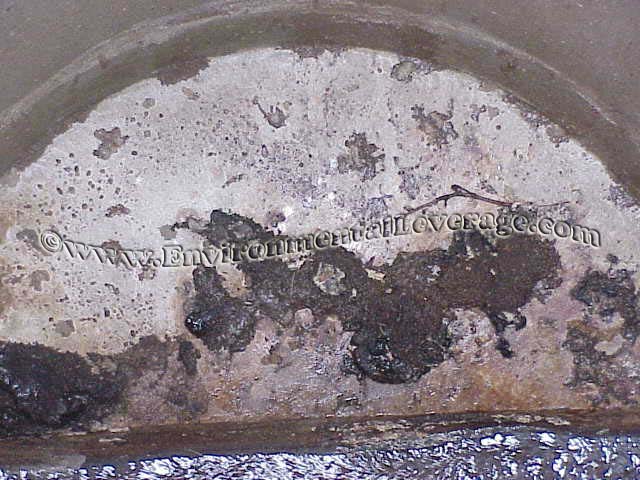
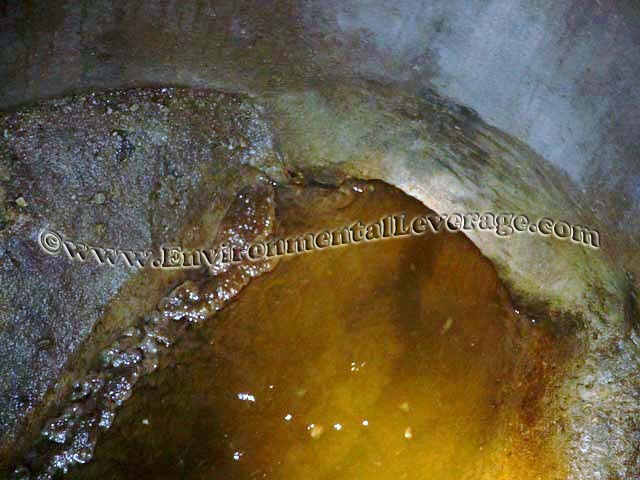
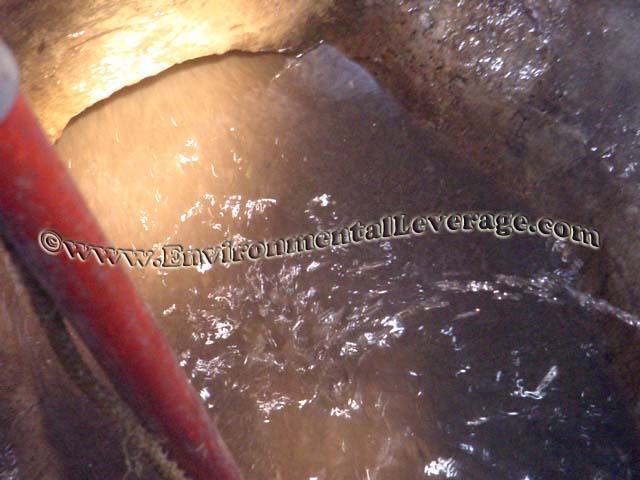
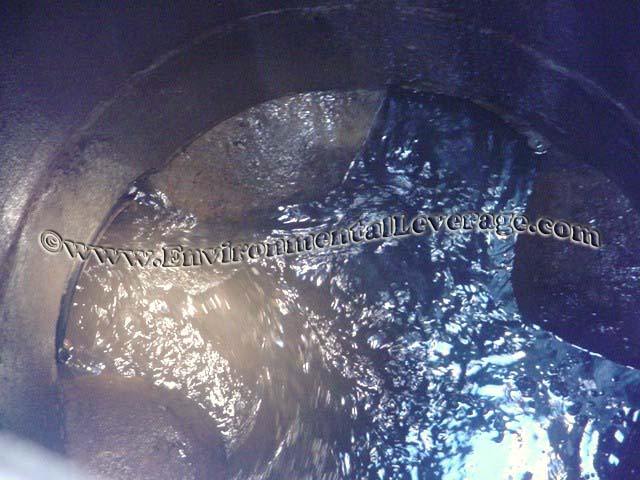
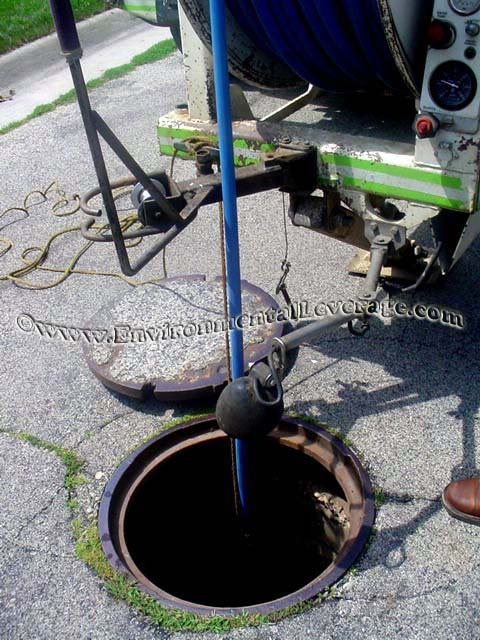
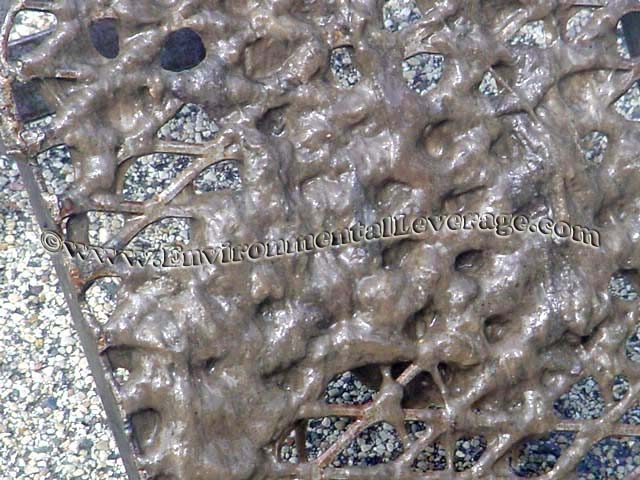
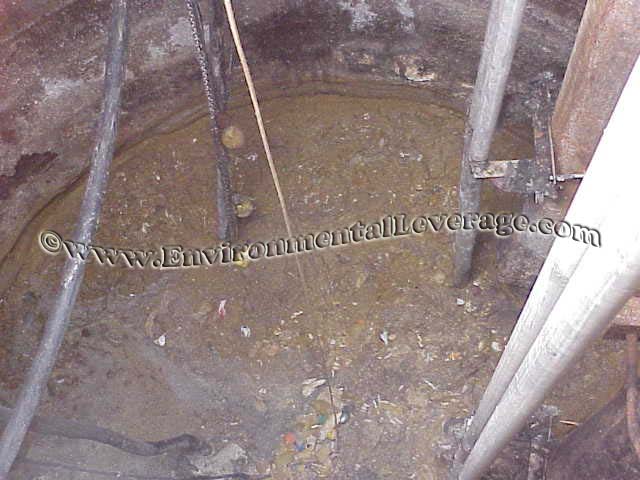
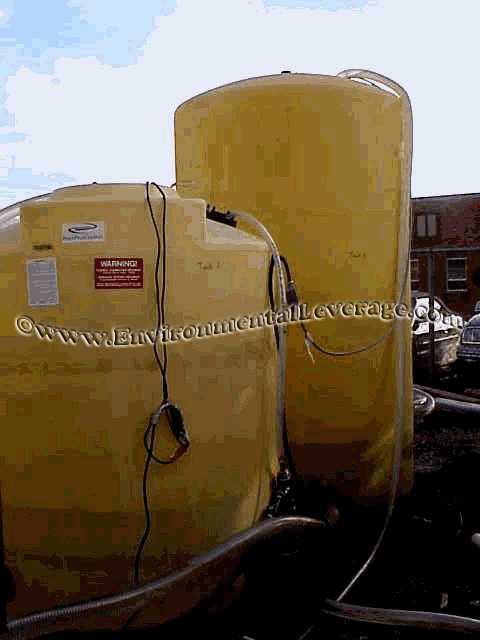
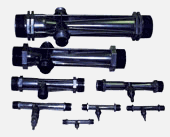 Mazzei injectors added to high flow lines - Mazzei® Injectors are
high-efficiency, Venturi-type, differential pressure injectors with internal
mixing vanes. When a sufficient pressure difference exists between the inlet
and outlet ports of the injector, a vacuum is created inside the injector
body, which initiates suction through the suction port.
Mazzei injectors added to high flow lines - Mazzei® Injectors are
high-efficiency, Venturi-type, differential pressure injectors with internal
mixing vanes. When a sufficient pressure difference exists between the inlet
and outlet ports of the injector, a vacuum is created inside the injector
body, which initiates suction through the suction port.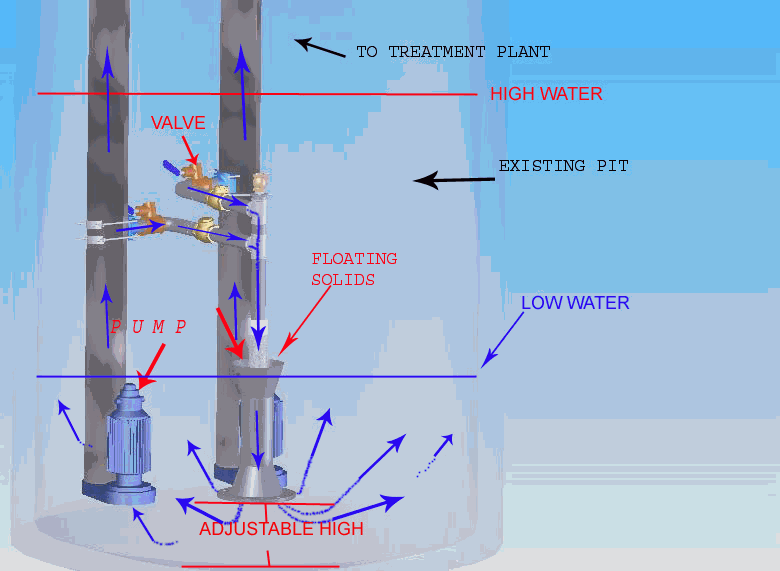 power
from discharge pipes of existing pumps in lift stations, force mains and
wastewater treatment plants. Recirculation occurs through a venturi orifice
fixed in an open-ended housing.
power
from discharge pipes of existing pumps in lift stations, force mains and
wastewater treatment plants. Recirculation occurs through a venturi orifice
fixed in an open-ended housing. 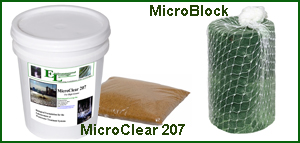

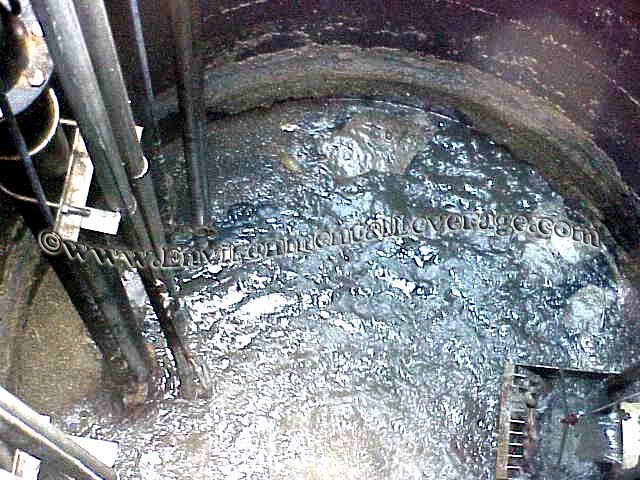
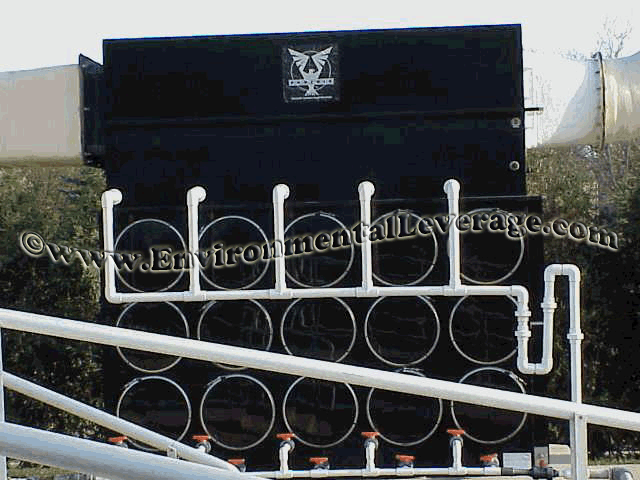 5. Carbon Filters- Some plants have used extensive carbon filters for
odor control at lift stations or primaries.
5. Carbon Filters- Some plants have used extensive carbon filters for
odor control at lift stations or primaries.